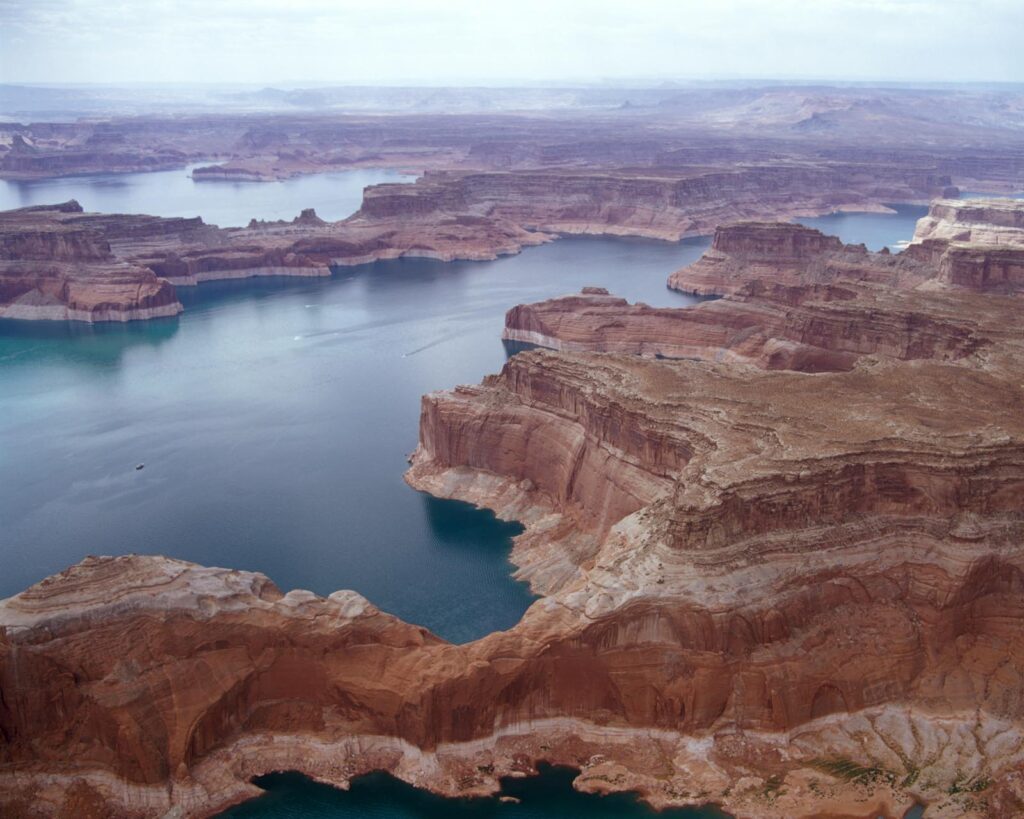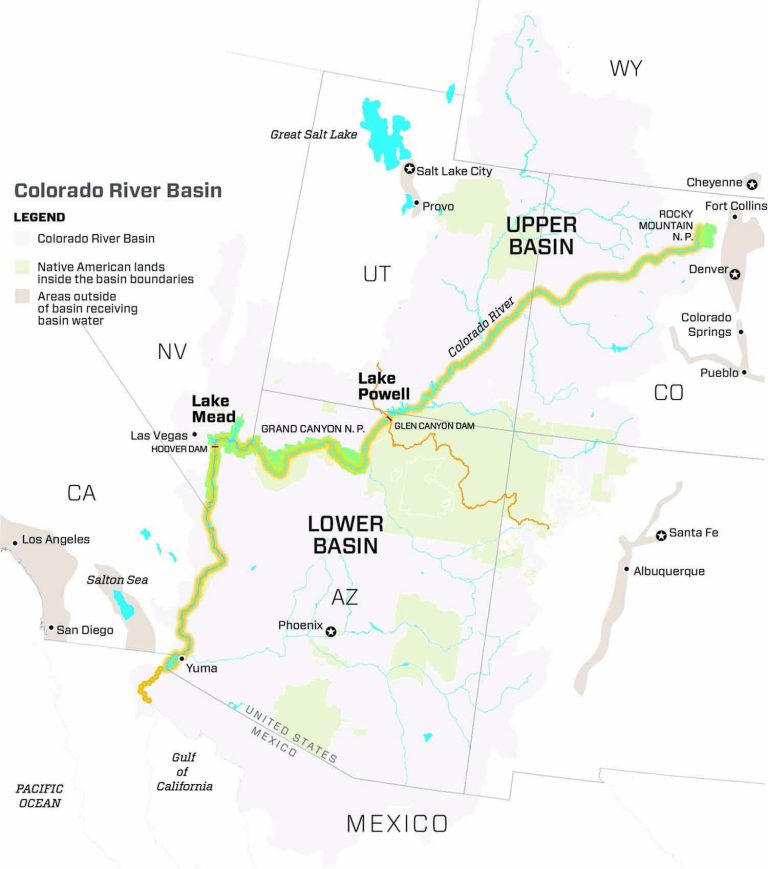
By Jerd Smith
Risks of severe water shortages in the seven-state Colorado River Basin have risen dramatically since April with new forecasts indicating that lakes Powell and Mead could hit crisis levels much sooner than previously expected.
U.S. Bureau of Reclamation Commissioner Brenda Burman said the change in the forecast is noteworthy.
“We’re dealing with more uncertainty than we thought,” she said during a virtual press conference.
The Bureau of Reclamation is responsible for managing the two storage vessels and monitoring the mountain snowpack and runoff that feeds them every year.
As recently as April, when the last forecast came out, inflows to Lake Powell were projected to be roughly 75 percent of average this year. The latest report, however, indicates inflows will be just 55 percent of average.
In just five months, the risk that reservoir levels could fall low enough by 2025 to threaten power generation and the ability to release physical water to downstream users has risen 12 percent, according to Reclamation.
Carly Jerla, a hydrologist and water modeling expert, runs the modeling team for Reclamation’s Lower Basin operations.
The 21-year stretch of drought in the Colorado River Basin has made the system extremely vulnerable to changes in weather patterns, Jerla said.
“In this system, one year of poor hydrology can influence the ways these reservoirs are impacted for multiple years into the future,” she said.
Reclamation officials stopped short of saying how states should respond to the dire water supply predictions.
Seven U.S. states share water from the Colorado River Basin. These include Colorado, Wyoming, New Mexico and Utah in the Upper Basin, and Arizona, California and Nevada in the Lower Basin. Mexico also relies on the river’s flows.

The two regions in the U.S. are governed separately, with the Upper Basin states overseen by the Upper Colorado River Commission and the Lower Basin overseen by the Bureau of Reclamation.
The river is a major source of water in Colorado, where it supplies roughly half of the drinking water on the Front Range and irrigation water for ranches, fruit orchards and corn fields on the Western Slope and Eastern Plains.
Brad Wind is general manager of Northern Water. It serves cities and farms from Boulder to Greeley and is one of the largest water providers in the state. Wind said the rising risk levels aren’t that surprising.
But, he said, to help the drought-stressed system regain some semblance of balance will require much more work. “We can’t walk away from this.”
Last year, for the first time in history, the seven states agreed to adopt a basin-wide Drought Contingency Plan. The Lower Basin component of that plan is now complete and requires cutbacks in water use as levels in the reservoirs fall and reach certain elevations. Arizona has already had to cut back its water use in 2020 as a result of the agreement, and Mead’s levels have risen as a result of these actions and other conservation programs. Now at 44 percent full, the reservoir is the highest it’s been in six years, according to the Bureau of Reclamation.
But the Upper Basin, though it has agreed to big-picture elements of an Upper Basin plan, has more work to do to define how a major piece of that plan involving large-scale water conservation, called demand management, would work.
Rebecca Mitchell is director of the Colorado Water Conservation Board, the agency managing the demand management study process in Colorado. She also serves on the Upper Colorado River Commission, representing Colorado. In a written statement, she said the 2019 Drought Contingency Plan has provided additional security for the system and that the study will move forward even as conditions on the river worsen.
“Colorado will continue to track the hydrologic conditions, and work collaboratively with the other basin states,” she wrote.
With the new forecast, however, pressure to cut back water use is rising.
Since 2000, lakes Powell and Mead have lost nearly half of their stored water supplies. Back then the system was nearly full, at 94 percent, according to Reclamation. This year the two reservoirs are collectively projected to end what’s known as the water year, on Sept. 30, at just 53 of capacity.
Climate change and warmer temperatures continue to rob the river of its flows. In fact, water flowing into Lake Powell during that 20-year period was above average just four out of the past 19 years, according to Reclamation.
Jerd Smith is editor of Fresh Water News. She can be reached at 720-398-6474, via email at jerd@wateredco.org or @jerd_smith.
This story originally appeared on Fresh Water News, an independent, non-partisan news initiative of Water Education Colorado. WEco is funded by multiple donors. Its editorial policy and donor list can be viewed at wateredco.org.





